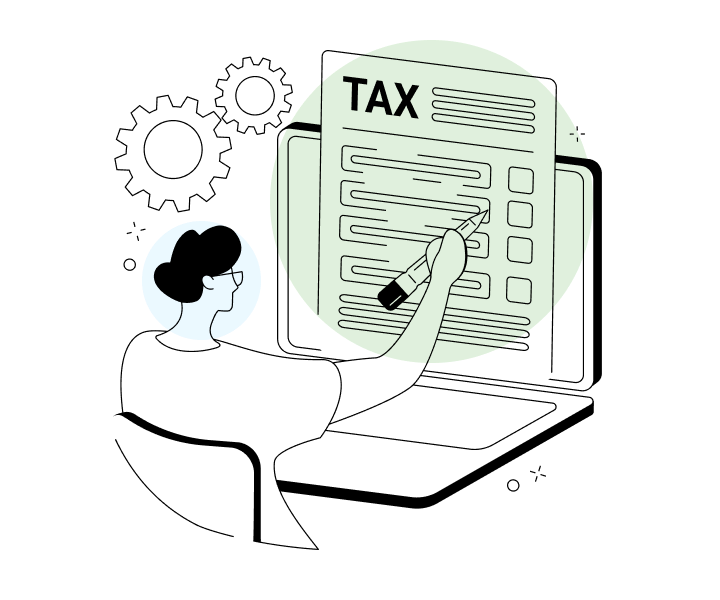A Guide to the T3 Trust Return in Canada
TurboTax Canada
January 24, 2025 | 6 Min Read
Updated for tax year 2025

Note: Proposed amendments related to trust reporting
Visit the CRA for the latest updates on trust reporting, including information on Bill C-15, An Act to implement certain provisions of the budget tabled in Parliament on November 4, 2025.
Whether you’re a trustee, executor, administrator, or liquidator of a trust in Canada, understanding the T3 Trust Income Tax and Information Return (T3RET) helps you accurately report trust income and comply with tax laws.
With our guide as a reference, you’ll get an in-depth understanding of trust income, what it is, how it’s taxed, and how to easily navigate the regulations.
Key Takeaways
- All trusts, unless specific conditions are met, need to provide an annual T3 return, including additional ownership information.
- Bare trusts are required to file a T3 return after 2023.
- If your trust is filing taxes for the first time, it will need a trust account number to file a T3 return electronically.
What is a trust?
A trust is a legal arrangement where one party (the settlor) transfers property/assets to another entity (the trustee) to hold and manage for the benefit of one or more beneficiaries. The trustee manages and administers the assets according to the terms set out in the trust deed or agreement.
Trusts are often used for various purposes, including:
- estate planning
- asset protection from creditors
- charitable purposes
- asset management
What is a T3 trust return?
The T3 trust return, also known as the T3 Trust Income Tax and Information Return, is a form you use as a trustee to report your trust’s income, gains, losses, and other relevant information. Similar to individuals submitting the T1 General Tax Form, trustees are required to submit a T3 return for their trusts.
A T3 trust return is both a return of income and a general information return, which means that you report not only information about the trust but also details regarding the beneficiaries and settlors of the trust.
What is a T3 tax form and who needs it?
The T3 tax form, or the T3 slip, is a form you need to issue to your trust’s beneficiaries to report amounts, such as their designated income and credits. In Quebec, beneficiaries receive an RL-16.
The T3 slip is important for your trust and also the beneficiaries. Beneficiaries use the information on this form to report trust income on their personal tax return.
Your trust uses the T3 tax form to report the trust’s income, deductions, and taxes payable when filing a T3 return.
What is trust income?
In Canada, trust income is the revenue your trust’s assets generate through the following:
- interest income
- dividend income
- rental income
- capital gains
- business income
This income is then distributed to beneficiaries or accumulated according to the terms of the trust agreement.
How is trust income taxed in Canada?
For tax purposes, a trust is considered a separate tax-paying entity. Simply put, the trust itself pays tax on any income it generates, not the settlors or beneficiaries.
Most trusts are subject to a flat tax rate, which is equal to the highest marginal rate that applies to individual taxpayers. The federal rate is 33% and the provincial tax rate depends on the province your trust operates in. For instance, if your trust operates in Ontario, the combined federal rate and provincial rate are typically around 50% or more.
What are the new trust reporting requirements?
Here’s a breakdown of the key changes effective for taxation years ending after December 30, 2023.
- All trusts, with a few exceptions, must now file a T3 return on an annual basis.
- Trusts required to file a T3 return, excluding listed trusts (often structured as business trusts or real estate investment trusts), must complete Schedule 15 to report additional beneficial ownership information to the CRA.
- Bare trusts are subject to new reporting rules.
Eligibility criteria for trusts to file a T3 return
The residence status of your trust is important to understanding your trust’s tax liabilities. The residence status is determined by where your trust’s real business is carried out—that is, where it is managed and controlled.
For instance, your trust is considered a resident in Canada if it carries out business in Canada, and a deemed resident trust if a contributor or beneficiary of the trust resides in Canada.
For trusts that are a resident in Canada or a deemed resident under subsection 94(3), a T3 return should be filed annually if either:
- The trust is an express trust (a trust created with the settlor’s express intent, usually in writing).
- For civil law purposes, the trust is other than one established by law or judgment.
All other trusts, including listed trusts, need to file a T3 return if they meet any of the following conditions:
- The trust has tax payable.
- The trust is requested to file.
- The resident trust either sold or is deemed to have sold a capital property or has a taxable capital gain.
- The trust is a non-resident throughout the year and has a taxable capital gain.
- The trust holds property subject to subsection 75(2) of the Income Tax Act.
- The trust provides a benefit of more than $100 to a beneficiary for upkeep, maintenance, or taxes for a property maintained for the beneficiary’s use.
Your trust has to file a T3 return if it receives income, gain, or profit that is allocated to one or more beneficiaries and has:
- a total combined income of more than $500 from all sources
- allocated income of more than $100 to a single beneficiary
- distributed capital to one or more beneficiaries
- allocated a portion of income to a non-resident beneficiary
Information you need to submit on Schedule 15
If your trust is required to file a T3 return, you need to report the beneficial ownership information on Schedule 15.
The form asks for information on all trustees, settlors, and beneficiaries. You also need to provide information on controlling persons—that is, persons who have the power to influence trustee decisions regarding the appointment of income or capital of the trust.
For each of these entities, you need to provide the following:
- name
- address
- date of birth (if applicable)
- country of residence
- Social Insurance Number, Business number, or individual tax number
The reporting requirements of a bare trust
A bare trust is a specific arrangement under which you (the trustee) act as an agent to handle the trust property as the beneficiaries instruct. You cannot take any action without a mandate from the beneficiaries, and your only function is to hold legal title to the property.
A bare trust’s income and capital gains are reported and taxed on the beneficiaries’ tax return(s)—not the trust’s tax return. For this reason, bare trusts were traditionally not required to file a trust return. The CRA announced bare trusts will be required to file a T3 return, for taxation years ending after December 30, 2023.
Note: The new reporting requirements change only the reporting obligation of bare trusts—not the tax treatment of bare trusts.
How do I file a T3 return?
Here are the steps to guide you through the filing process:
1. Know your deadline
You must file the T3 return by the deadline, which is no later than 90 days after the trust’s tax year end. Ensure you meet this deadline and include any payments for balances owing.
2. Gather necessary documents
Collect all essential documents, including the trust deed, financial statements, supporting schedules, and forms. Compile financial statements reflecting the trust’s income, deductions, and allocations.
3. Complete tax forms
Fill out the required forms, including:
- T3RET (T3 Trust Income Tax and Information Form)
- T3SUM (Summary of Trust Income Allocations and Designations)
- T3 slip (Statement of Trust Income Allocations and Designations).
You also need to report beneficial ownership information on Schedule 15.
- Submit the return: File your T3 return electronically or by traditional mail. For electronic filing, you need to fill out form T183TRUST Information Return. Consider using a My Trust Account for efficient filing, which allows you to view and edit trust information.
- Estimate income if necessary: If you haven’t received all relevant information slips, you can estimate the income. However, if differences occur between your estimations and later received information slips, you must file for reassessment and submit the required documents to the CRA.
If your trust is filing taxes for the first time, it will need a Trust Account Number to file a T3 return electronically.
What are the penalties for non-compliance of a T3 return?
If you file a return late and there is a balance owed, the CRA will charge a 5% penalty of the total balance, plus 1% for every month that the return is late. Even if you have no taxes due, you face a late filing penalty of $25 per day.
Seem complicated? We're here to help.
TurboTax software guides you step-by-step so you're confident your taxes are done right, and you'll get every dollar you deserve.
Get StartedRelated articles

© 1997-2024 Intuit, Inc. All rights reserved. Intuit, QuickBooks, QB, TurboTax, Profile, and Mint are registered trademarks of Intuit Inc. Terms and conditions, features, support, pricing, and service options subject to change without notice.
Copyright © Intuit Canada ULC, 2024. All rights reserved.
The views expressed on this site are intended to provide generalized financial information designed to educate a broad segment of the public; it does not give personalized tax, investment, legal, or other business and professional advice. Before taking any action, you should always seek the assistance of a professional who knows your particular situation for advice on taxes, your investments, the law, or any other business and professional matters that affect you and/or your business.









